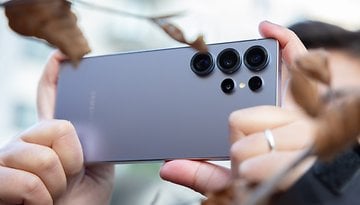The best mobile phone camera: Oppo's NPU takes on the iPhone


Read in other languages:
The decisive factor for great looking smartphone photos in 2021 is not the number of megapixels or fast lenses, but rather, the software. Needless to say, this is also in tandem with the rise in smartphone processing power. Oppo unveiled MariSilicon X today, an NPU that will take care of the image processing algorithms in the upcoming flagship Find X4 Pro, and we are privy to the first batch of photo and video features.
TL;DR
- Oppo Find X4 Pro with AI night videos in 4K resolution.
- Dynamic range of the camera is said to be improved significantly.
- Find X4 Pro with MariSilicon X will be released in the first quarter of 2022.
There needs to be a mention of special use cases here. Oppo has gushed waxed lyrical about how much MariSilicon X will deliver in the Find X4 by providing an example. The Find X3 Pro manages two frames per second at 4K resolution with AI noise reduction. In comparison, the successor is touted to offer a possible 40 frames per second, which is enough for 4K video in real-time. At the same time, power consumption is said to have been halved compared to the NPU in the Find X3 Pro.
- Camera blind test 2021: Apple and Google against the rest of the world.
- Smartphone cameras: The ultimate buying guide
- These are the best camera smartphones in 2021
The new NPU is also expected to make a leap forward in terms of photos. In the Find X3 Pro, the image processing algorithms only kick in after demosaicing, which is when the RAW data is converted to YuV. With MariSilicon X, the algorithms can already do magic with the RAW data. Like Apple's ProRAW, for example, this combines the benefits of the RAW format with the strengths of computational photography. Very nice - but only if it works as advertised.
Oppo wants to eclipse even the dynamic range of the iPhone 13 Pro with the MariSilicon X, though. Even a contrast ratio of 1,000,000 to one should still be able to be mapped out. In order to save you some brain power, that would correspond to 19.9 f-stops or 120 dB dynamic range.
So far, such values have been extremely rare for sensors. Last year, Canon caused a bit of a stir in the industry with the LI7050SAC, which also boasted 120 dB, and the fabled Canon R1 is also rumored to be able to achieve 20 stops with the help of computational photography.
Anyway, the Find X4 Pro has yet to prove whether Oppo's camera system can really bring that kind of insane power to the road, and I'll only believe it when I see it. After all, Oppo would not only leave the iPhone 13 Pro in the dust with it but, at least when it comes to dynamic range, it will also outpace all professional cameras. In the video above that was linked from the Japanese Canon YouTube channel, you can get an idea of what 120 dB dynamic range means in practice.
The sensor could very well be the secret sauce here in the Find X4 Pro. According to Oppo, it will be an RGBW chip. RGBW means that the Bayer mask also contains white pixels without color filters. Since the light arrives here unfiltered, these pixels naturally "see" more light and are therefore more sensitive to light. The MariSilicon X now allows separate pipelines for the white and the RGB pixels. It is possible that the Find X4 Pro can push up the dynamic range using this trick.

Last but not least, the NPU's capabilities should also be noticeable in everyday photography through a faster camera app and a live preview for HDR mode or more complex filters, for example. And then there's also some key data from the engine deck of the U.S.S.
Enterprise in the press release: According to this, the sensor can perform 18 trillion computing operations per second (int8) - and 11.6 TOPS per watt. If you were to compare Nvidia NPUs in the AI chip quartet, which sounds great, of course. However, the unit "TOPS" as a measure of AI hardware performance should be taken with extreme caution, as AI specialist Geoff Tate explained here.
In any case, Oppo is already beating the drum for the camera in the Find X4 Pro and as a camera fan, I'm looking forward to it tremendously. We'll know more before the end of the first quarter of 2022, if the manufacturer keeps its promise.



















